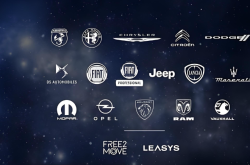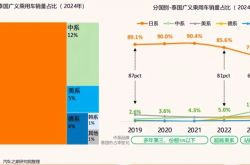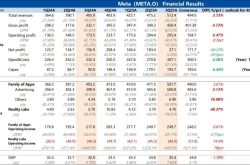Nadella Era: Microsoft Cloud Revenue Soars to $168 Billion, AI Powers $4 Trillion Market Cap
![]() 08/04 2025
08/04 2025
![]() 672
672
Written by Yang Jianyong
For the fiscal year ending June 30, 2025, Microsoft's overall revenue surged to $281.7 billion, marking a 15% increase year-on-year, with net profit reaching $101.8 billion (approximately RMB 730 billion), up 16% from the previous year.

Microsoft Cloud's annual revenue hit $168 billion, with AI serving as the primary growth engine for cloud services.
Within this, Microsoft Cloud's revenue amounted to $168 billion, a 23% year-on-year increase. Intelligent Cloud's revenue stood at $106.2 billion, up 21.5% year-on-year. Azure's performance was particularly noteworthy, with revenue exceeding $75 billion (approximately RMB 540 billion) this year, representing a 34% year-on-year growth. Large AI models emerged as the pivotal factor driving cloud revenue growth.
Cloud services have solidified their position as Microsoft's core business segment, primarily due to Nadella's strategic focus on cloud computing and AI. Under his leadership, Microsoft successfully transitioned from a traditional software licensing model to a world-leading AI-driven cloud platform, rejuvenating the tech giant and propelling it back to the pinnacle of global success. This transformation stands as a classic case in global business history.
Significantly, since 2016, Microsoft has been committed to establishing Azure as the world's AI infrastructure, integrating various AI-enabled application services delivered through cloud services, achieving comprehensive coverage across IaaS, PaaS, and SaaS.
Leveraging its rich AI capabilities and robust computing infrastructure, Microsoft is enabling various industries to innovate. Azure AI Foundry, for instance, offers developers access to over 11,000 AI models, utilizing tools like model routers, rankings, and benchmarking to help users select and implement the most suitable models for their businesses efficiently.
Estee Lauder and its partners are a case in point, jointly developing a generative AI technology ecosystem comprising Microsoft Copilot Studio, Microsoft Azure OpenAI Service (international version), and Microsoft Azure AI (international version) search. This integration of data, trend identification, marketing material creation, and research guidance is accelerating the launch of moisturizers, lip glosses, and makeup products.
NIO, another example, generates 610,000 lines of code daily through the intelligent GitHub Copilot, with an acceptance rate of up to 33%, significantly enhancing R&D efficiency. The in-car assistant NOMI, built on Azure OpenAI Service, optimizes driving safety and user experience through precise contextual interactions. Meanwhile, Microsoft's security solutions safeguard NIO's complex IT environment and hybrid AI platform, enabling automated daily threat detection and cross-endpoint security collaboration.
"Cloud and AI are the driving forces behind business transformation across all industries and sectors," said Microsoft CEO Satya Nadella. By leveraging its technology stack, Microsoft is assisting customers in adapting and growing in this new era, resulting in substantial growth.
Nadella's Decade of Transformation: Steering Microsoft from Software Giant to AI Cloud Service Leader
Times evolve, and to remain competitive, enterprises must adapt and transform. As Microsoft's third CEO, Nadella has exceeded expectations, not only guiding Microsoft out of a challenging period but also cementing his own legend in the process.
When Nadella took over as CEO from Ballmer in 2014, Microsoft was grappling with the innovator's dilemma. Appointed during a time of crisis, Nadella adopted a growth mindset, actively transforming the company towards cloud and AI, shifting the strategic focus from the Windows licensing model to "mobile-first, cloud-first". Within a few years, he increased Azure's cloud service market share to 20%, making it the world's second-largest public cloud vendor and unlocking a new growth trajectory for Microsoft.
Today, Microsoft's market cap has surpassed the $4 trillion mark, transforming the 50-year-old giant into the world's most growth-oriented technology enterprise. On July 31, 2025, Microsoft's stock price hit an all-time high, setting a new milestone in business history with a market cap of $4.15 trillion, becoming the second company globally to cross the $4 trillion threshold after NVIDIA.
This achievement is primarily attributed to the financial results exceeding market expectations post-report release. Despite a slight narrowing of gains at the close, Microsoft's current market cap remains as high as $3.9 trillion (approximately RMB 28 trillion), second only to NVIDIA, positioning it as the second-largest company globally in terms of market cap. This underscores investors' optimism about the commercial prospects of AI amidst the unprecedented development opportunities presented by large models. In the era of generative AI, NVIDIA and Microsoft are undoubtedly the two global frontrunners.
For NVIDIA, global demand for its AI chips is unprecedentedly strong, leading to exponential revenue growth over the past two years. In the capital market, NVIDIA has become a capital myth, with its stock price continuously rising, making it one of the strongest stocks globally.
Similarly, Microsoft is benefiting from the surge in AI demand across sectors, fueling the continuous growth of its cloud services. In terms of revenue, it is the world's largest cloud service provider and the second-largest public cloud vendor globally.
Notably, Microsoft's investment in OpenAI has yielded remarkable results. Following OpenAI's release of ChatGPT in late 2022, AI entered the era of generative AI, with various sectors swiftly integrating large model services, propelling the cloud service market into a new era of growth.
According to Synergy Research data, enterprises' spending on cloud infrastructure services in the second quarter of 2025 approached $100 billion, an increase of over $20 billion compared to the second quarter of 2024. This marks the third consecutive quarter of 25% year-on-year growth, with the growth rate continuing to climb. AI is the primary driver behind this expansion.
With over $10 billion invested in OpenAI, making it the largest shareholder and deeply integrated, Microsoft has also built the Azure AI infrastructure, positioning itself as one of the biggest beneficiaries of generative AI. Not only has its market cap hit an all-time high, but its AI-driven revenue has also reached record levels, with annual profit surpassing the $100 billion mark, establishing it as one of the most profitable technology companies globally.
Finally,
Artificial intelligence serves as the core growth driver in the global cloud service market. Particularly this year, with the emergence of DeepSeek, an open-source platform boasting exceptional performance, various industries are fully embracing it. This enables more enterprises to deploy AI applications at a lower cost, helping to boost the revenue of cloud computing companies and unleash their growth potential.
Yang Jianyong is a contributor to Forbes China and expresses his views solely as an individual. He specializes in providing in-depth insights into cutting-edge technologies such as artificial intelligence, AI large models, the Internet of Things, cloud services, and smart homes.








